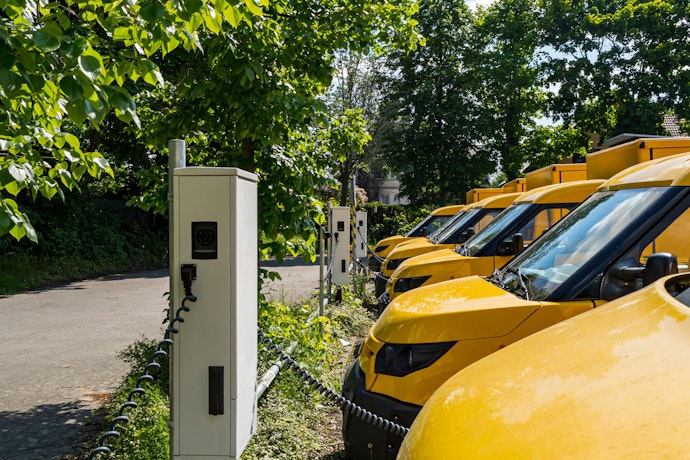What is Telematics and How Does it Benefit Fleets?
Telematics technology allows the sending, receiving and storing of information relating to vehicles via tracking devices...
Read more
Green vehicles, also known as eco-friendly vehicles or clean vehicles, are considered more environmentally friendly than those that run on petrol or diesel. Instead, they are powered by alternative fuel or electricity.
Green vehicles come in all different shapes and sizes and include battery electric, plug-in hybrid electrics, hybrid electrics, and biodiesel cars. Other lesser-known types of green transport are hydrogen and fuel-cell vehicles, solar cars, clean diesel vehicles, and compressed-air vehicles to name but a few. The main types of green cars are explained below in more detail:
Battery Electric Vehicles (BEVs): BEVs are powered solely on electricity, which is taken from battery packs in the vehicle. They tend to have a greater output compared to hybrid and plug-in hybrid electric vehicles.
Plug-in Hybrid Electric Vehicles (PHEVs): A PHEV has a gas tank as well as a charging port and can therefore run on fuel if the battery becomes flat or run on electricity if the fuel is all consumed. They tend to have larger battery packs and more powerful electric motors than hybrids.
Hybrid Electric Vehicles (HEVs): The most common form of HEV is the hybrid electric car, but there are also hybrid electric trucks, boats, buses, and aircrafts. With HEVs, all the power comes from fuel, but there is also an electric motor that can assist the fuel-powered engine.
Biodiesel Cars: Not too dissimilar to diesel-powered vehicles, this type of green car has many benefits when it comes to fuel and energy efficiency. Biodiesel is manmade, making it a lot easier for manufacturers to produce as well as making it a lot less damaging to the environment.
The environment benefits the most when it comes to green transport. The main plus points being:
However, the owner of a green car also benefits. Advantages include:
Check out our article for more information on boosting productivity for a greener fleet.
Light electrified vehicles are slowly but surely gaining in popularity in the country, but numbers are still low. Only around 2% of the light fleet is petrol/diesel hybrids (including plug-in hybrids), and only 0.45% can be classified as fully electric.²
Petrol and diesel are by far the most popular fuel choices. Here is what light fleet vehicles in New Zealand were powered by in 2020:
New Zealand contributes less than 0.3% of total global greenhouse gas emissions, but despite this, the country has the 12th highest level of emissions per capita in the developed world. This means that the country is susceptible to the effects of climate change and should therefore be a part of international climate change negotiations.⁴
Just like in Australia, the plan is to reduce emissions by 30%-35% by 2030 and both countries are on target to achieve this reduction. The Australian Government has also set a target to reach net zero emissions by 2050 for its own country plus New Zealand.⁵
As with most new technologies, there are challenges to be faced and green cars aren’t an exception. Stumbling blocks include:
On the whole, the future of green cars looks positive and as more people purchase green vehicles, more benefits will emerge such as lower battery costs equating to lower vehicle prices, and attractive governmental incentives. As more time and effort is put into combatting climate change and people are becoming more aware of the effects, the demand for green transport will no doubt grow, and the future of transportation will gradually change for the better.
Read more about running a sustainable fleet with a fuel monitoring system from Verizon Connect.
1.https://www.goultralow.com/ev-owners/benefits/
2.https://www.transport.govt.nz//assets/Uploads/Report/AnnualFleetStatistics.pdf
3.https://www.transport.govt.nz//assets/Uploads/Report/AnnualFleetStatistics.pdf
4.https://environment.govt.nz/publications/statement-of-intent-2008-2011/operating-intentions/climate-change/
5.https://www.industry.gov.au/sites/default/files/October%202021/document/the-plan-to-deliver-net-zero-the-australian-way.pdf
Tags: Cost Control, Vehicle Maintenance



Find out how our platform gives you the visibility you need to get more done.
Telematics technology allows the sending, receiving and storing of information relating to vehicles via tracking devices...
Read moreFleet management software can benefit businesses by increasing fuel efficiency, reducing operating costs, improving fleet...
Read moreAs a fleet owner, your day-to-day costs can quickly add up. What you don’t know is there are further hidden, expensive...
Read moreAble Security Group started operating in September 1993 on the Sunshine Coast, Queensland, Australia. Over the next 25...
Read more